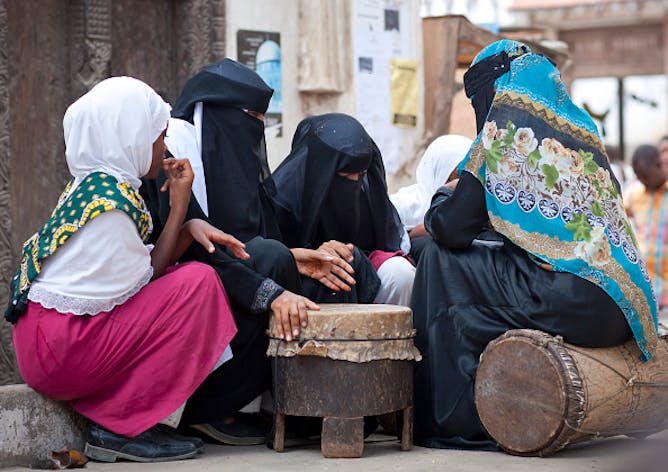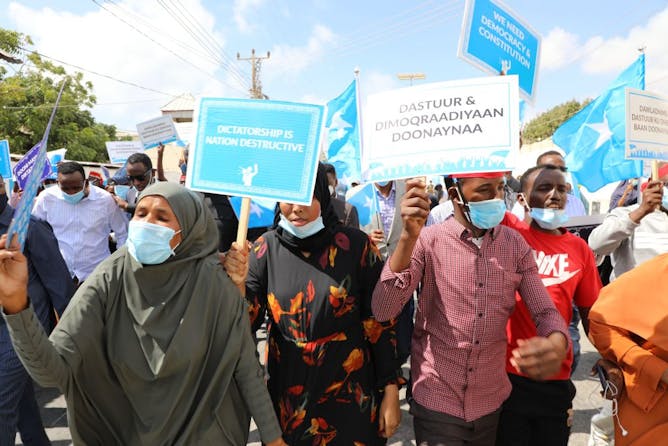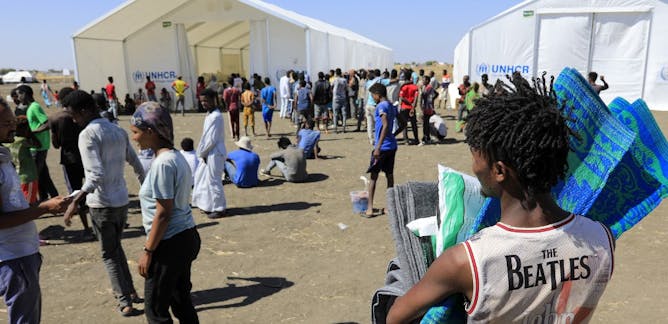|
The involvement of women and girls in terrorist attacks has attracted increased interest in East Africa. They have been identified as able recruiters for the Somali-based Al-Shabaab as well as masterminds of deadly attacks, enablers in logistical planning, financial transactions and espionage. Fathima Azmiya Badurdeen explains what’s behind the willingness of women and girls in Kenya’s coastal region to join the terrorist group. While
the gender-dynamics of submission and subordination within families and the community play a part, there are also political and ideological motivations.
Clashes in Mogadishu between protestors and government forces underscore heightened tensions about delays in holding elections in Somalia. Mohammed Ibrahim Shire looks at what’s holding up the polls, and what light there is at the end of the tunnel.
|

Muslim women and children in Lamu in north east Kenya. Al-Shabaab’s recruitment of female members is most evident in coastal and north eastern counties.
Photo by Eric Lafforgue/Art in All of Us/Corbis via Getty Images
Fathima Azmiya Badurdeen, Technical University of Mombasa
Women's motivations for joining terrorist networks belie Kenyan media accounts of naive girls manipulated through romantic notions of Jihadi brides or wives.
|

Supporters of different Somali opposition presidential candidates protest over delayed elections in Mogadishu on February 19, 2021.
Photo by -/AFP via Getty Images
Mohammed Ibrahim Shire, University of Portsmouth
The current tensions have been driven by a delay in elections.The only feasible solution is to ensure that they take place.
|
Politics + Society
|

Vanessa Freije, University of Washington
The battle between media companies and foreign governments over who controls the news dates back some 150 years, to when European and US wire services dictated the world's headlines.
| |

Thomas Hallock, University of South Florida
The myth has become a symbol of the traumatizing legacy of trans-Atlantic slavery. It also serves as a form of resistance and healing.
|
|
|
Health + Medicine
|

Mosoka Fallah, University of Liberia
Countries in the West Africa region are in a very different position to seven years ago. They now have the experience of the past as well as new tools to tackle Ebola.
| |

Jacqueline Weyer, National Institute for Communicable Diseases
The virus is always present in nature and when circumstances allow, it may jump from one species to another.
|
|
|
En Français
|

Claire Loiseau, Universidade do Porto
De l’Alaska au Golfe de Guinée, une écologue évoque ses missions de terrain et ses recherches sur les impacts des activités humaines sur les oiseaux et leurs pathogènes.
| |

Eugène Bakama Bope, Université de Lubumbashi
Le blocage de l’aide humanitaire est une violation du droit international. Tout pays qui s’en rend coupable s’expose à une panoplie de sanctions.
|
|
|